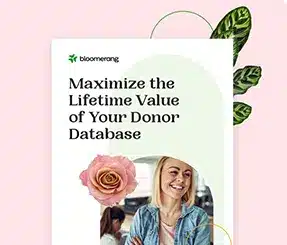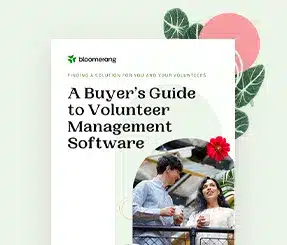5 Ways A Strategic Plan Boosts Fundraising


Full Platform Overview Chat With Us



Full Platform Overview Chat With Us




Too often, nonprofit leaders think of strategic planning as a “nice to have” rather than a “must have.” In reality, though, strategic planning can become one of the most powerful tools in an organization’s fundraising toolbox.
When done well, a successful strategic planning process can clarify, energize, and streamline your fundraising strategy—and make fundraising itself easier and more efficient.
In this article, we’re going to look at how to use strategic planning to benefit your nonprofit’s fundraising, and delve into top tips for getting the most out of the planning process.
After our team’s decades of fundraising experience, one of the very first things we advise nonprofits seeking to raise more money is to map and prioritize their funding needs. This is essential for ensuring your fundraising is focused and effective.
Many organizations start the year with an annual plan and budget. But without alignment across board, staff, and all departments, any bumps in the road can quickly create chaos for fundraisers. Anxious board members might push for new strategies that have little chance of sustainability (such as creating a brand new $10,000 scholarship program with a $500 seed donation from a friend). Program leads might lobby the executive director and fundraising team to put more time into raising money for their programs (at the expense of general operating support). Some board or staff members might even go rogue and pitch donors on programs that don’t exist yet and have not been approved by the executive director or board. And yes, we’ve seen each of these situations happen before!
Fundraisers can quickly end up spending more time putting out fires than raising precious dollars.
That’s where a strategic planning process comes into play. At Funding for Good, we emphasize the process part of nonprofit strategic planning. That’s because an effective strategic planning process should gather input and insights from across the organization. Then, through a facilitated planning retreat, your team works through challenges and co-creates a shared vision for the organization.
Once you have that shared vision, prioritizing funding needs becomes a lot easier. Everyone on the team knows what needs to be funded, why it needs to be funded, and how it will benefit the overall organization. Then, when funding challenges or opportunities arise, everyone can turn to that shared vision when making and communicating about choices.
Donors prefer to fund programs that can deliver results in smart and cost-effective ways. Plus, these are the same types of programs organizations want to be running!
Strategic planning gives organizations a chance to step back and assess their programs from top to bottom. With input from stakeholders, the planning team can consider which programs are working best and why—as well as ensure that all programming aligns with the organization’s overall mission and vision. This often shines a light on the most and least effective strategies across programs and highlights initiatives that need rethinking.
Many organizations are surprised during the strategic planning process to realize how poorly some programs are performing. For example, a program might be producing a high volume of impressive-sounding activities, but actual impact and results could be lagging far behind.
The strategic planning process helps identify challenges while also giving the whole team a chance to set collective goals, develop clear and measurable metrics to evaluate impact, and use these tools to design better programs.
Beyond individual programs, organizations with strong leadership, operations, and sustainability plans are better bets when it comes to donor investments. Even the act of undertaking a strategic planning process shows donors that your organization is serious about creating a sustainable impact.
In many cases, the planning process also reveals areas where organizations have under-invested in operations and systems. For example, many nonprofits are slow to invest in donor and contact management systems, instead wasting time trying to make old software or spreadsheets “work.” Many organizations also lag on staffing and training for data management, including donor data, which means they may be paying for expensive tools yet leaving donor information woefully out of date.
Investing in better operational tools and practices often saves time and money in the long run. It also helps fundraisers focus on fundraising instead of wrangling inadequate data and software.
The most successful organizations approach fundraising as a team sport.
A fundraiser toiling alone in a back office—without support from the board or program leads—is going to struggle to inspire donors. In contrast, a fundraiser working with board and staff who are not only eager to fundraise but are also aligned on a shared vision and strategy, is positioned for success. These fundraisers can deploy staff and board members to cultivate donors, build relationships, and even network to find new prospects. This multiplies fundraising capacity, energy, and results, without squeezing the budget.
That’s why a focus on building a shared vision and internal alignment is so essential in the strategic planning process—and for fundraising. When approached with intention, this alignment can start even before the planning process begins, while your organization is learning about and preparing for strategic planning.
One of the best ways to make fundraising more efficient is to create a grant template, also known as a boilerplate proposal. This template grant proposal covers 90% of the questions asked by funders and individual donors—thus making it much simpler to put together proposals, brochures, newsletters, website text, etc. because you already have the core language written.
Grant template proposals can be written for individual programs, projects, or general operating support. While grant templates may need some editing for specific donors, much of the text can be copied, pasted, and lightly edited.
Where a strategic plan comes into play is providing the core of every grant proposal and donor pitch you’ll be making. The strategic plan articulates your organizational vision and mission in the most compelling way possible. And it describes how your strategies and programming will help achieve that vision. The result is stronger pitches and a lot less time spent writing.
Once you’ve decided to undertake a strategic planning process for your organization, there are a few tips we recommend to get the most value out of the experience.

Comments